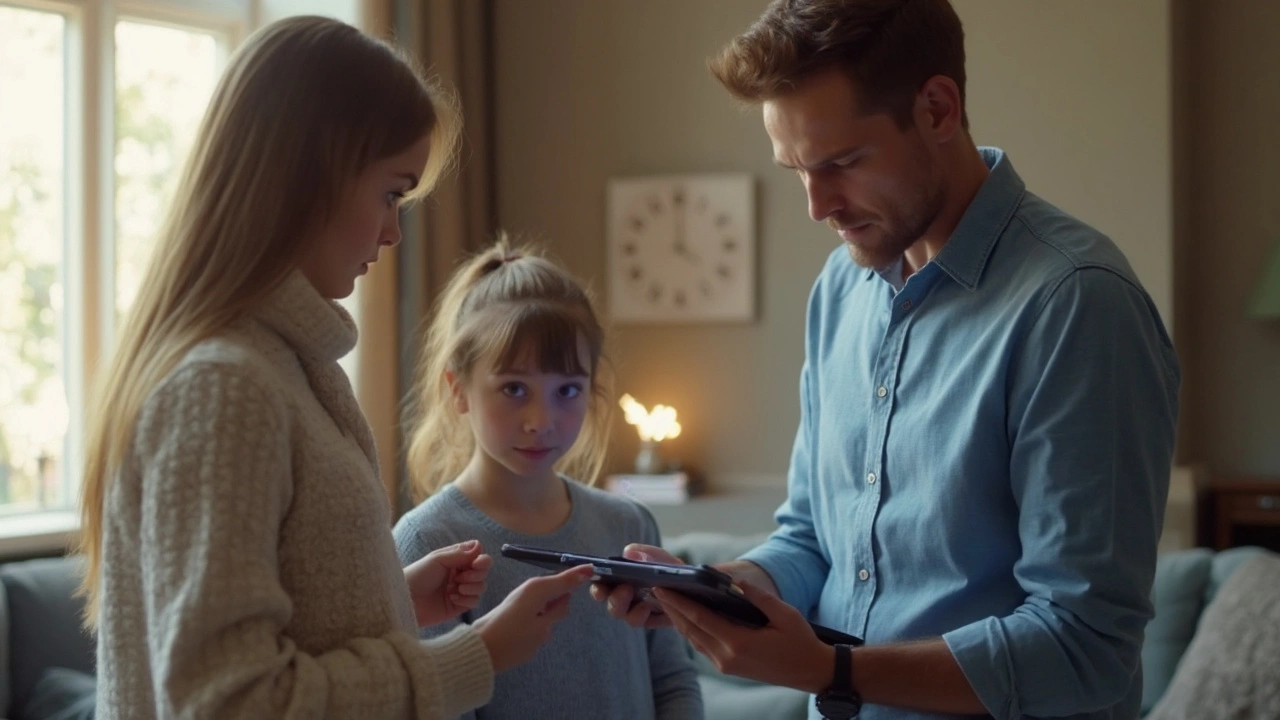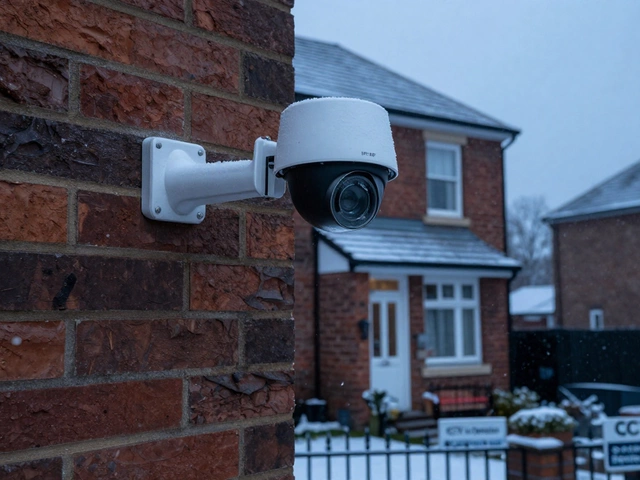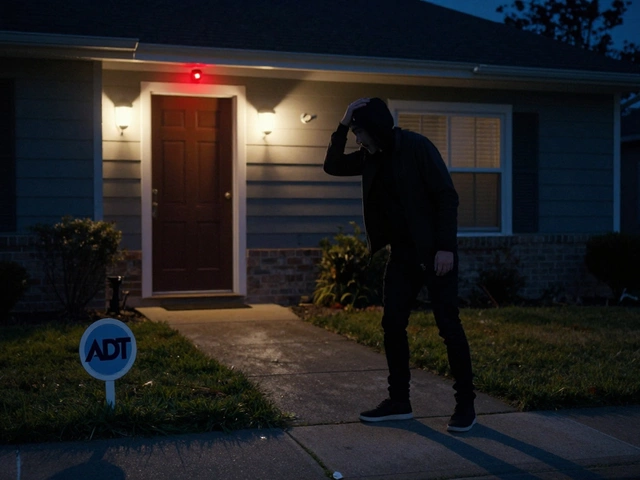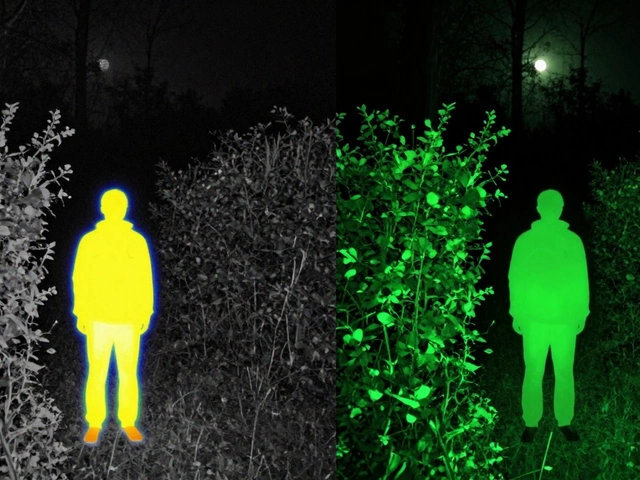It’s easy to get lost in camera jargon and flashy ads when you shop for home security gear. But when it comes to protecting your home, you want straight answers—who’s actually the top dog in security cameras? It’s not just about the brand name you see everywhere. The real answer depends on how a brand’s cameras work in everyday life, not the studio-perfect photos on the box.
Different homes need different setups. Maybe you’ve got a porch pirate problem, or you want to check on your pets while you’re at work. Choosing the right brand can make things way easier (or way more stressful if you get it wrong). We’re skipping all the marketing fluff and digging into what sets the top camera brands apart, so you don’t waste time or money on gear that doesn’t work for you.
- What Makes a Security Camera Brand ‘No. 1’?
- Top Features to Look For
- Breaking Down the Leading Brands
- Real-Life Performance & User Tips
- Picking the Right Camera for Your Needs
What Makes a Security Camera Brand ‘No. 1’?
So what actually puts a security camera brand at the top? There’s more to it than just having a lot of ads or a shiny logo. The best brands tend to nail a few big things: solid reliability, easy setup, helpful features, fair pricing, and good support if something goes wrong.
Reliability comes first—if your camera freezes or stops recording when you really need it, what’s the point? Folks usually stick with brands known for consistent uptime and quick alerts. Then there's user experience. No one wants to spend hours fussing with Wi-Fi settings or staring at confusing app menus. Brands that offer simple mobile apps and step-by-step guides get a lot of love.
Security itself is another huge factor. Brands that take privacy seriously use end-to-end encryption, regular software updates, and let you control your data. You don’t want your living room feed popping up on some random server. Customer support also makes a big difference. Top home security brands answer questions fast, don’t dodge warranty claims, and have tons of online guides if you get stuck.
Last, let’s talk features for real life. The best camera brands don’t just add random tech for marketing. They focus on stuff people actually use: clear night vision, motion zones, even package detection for your front porch.
| Brand Quality Factor | Why It Matters |
|---|---|
| Reliability | Never miss an important event |
| Setup & Usability | Less hassle for the non-techie crowd |
| Privacy & Security | Keep your footage safe |
| Customer Support | Easy help when you need it |
| Smart Features | Make cameras work for your routine |
Bottom line: The no. 1 security camera brand does more than just look good on a shelf. It actually makes your home safer without driving you nuts in the process.
Top Features to Look For
If you’re shopping for the best security camera brand, focus on features that actually make a difference in day-to-day use. Some are must-haves, while others depend on your house, Wi-Fi, and whether you’re geeky enough to fiddle with settings.
- Video Quality: Go for at least 1080p. If you want to actually recognize faces or license plates, 2K or 4K is even better. Grainy footage only helps criminals get away with stuff.
- Night Vision: Most break-ins happen in low light. Look for cameras with infrared or color night vision. Big names like Arlo, Ring, and Google Nest all have solid options here.
- Motion Detection: Skip cameras with basic detection—they’ll spam your phone every time a leaf blows by. Look for ones with smart person or package detection, like what you get on Arlo Pro 5 or Google Nest Cam.
- Storage Options: A camera is useless if you can’t check old footage. Secure brands let you pick: Cloud subscriptions, local SD cards, or both. A subscription to cloud storage usually means you can look back 30 days or more.
- Smart Home Integration: If you use Alexa, Google Assistant, or Apple HomeKit, make sure your security camera works with your setup. This makes checking feeds and setting up alerts way easier.
- Weather Resistance: Outdoor cameras should handle rain, cold, and dust. Check the IP rating. Something marked IP65 or higher means it can survive a nasty storm.
- App Experience: The fanciest hardware won’t matter if the app constantly crashes. Look up real user reviews—poorly designed apps are one of the biggest complaints.
Here’s a quick table to show which features are most common among the top home security camera brands:
| Feature | Arlo | Google Nest | Ring | Eufy |
|---|---|---|---|---|
| 1080p or higher video | Yes | Yes | Yes | Yes |
| Color night vision | Yes | Yes | Some models | Some models |
| Smart alerts | Yes | Yes | Yes | Yes |
| Local storage option | Yes | No | No | Yes |
| Weather-resistant | Yes | Yes | Yes | Yes |
| Works with Alexa/Google | Yes | Yes | Yes | Yes |
Pay attention to these—not just the price tag. Picking the right features means you’ll actually use your camera, instead of cursing at your phone when something shady happens.
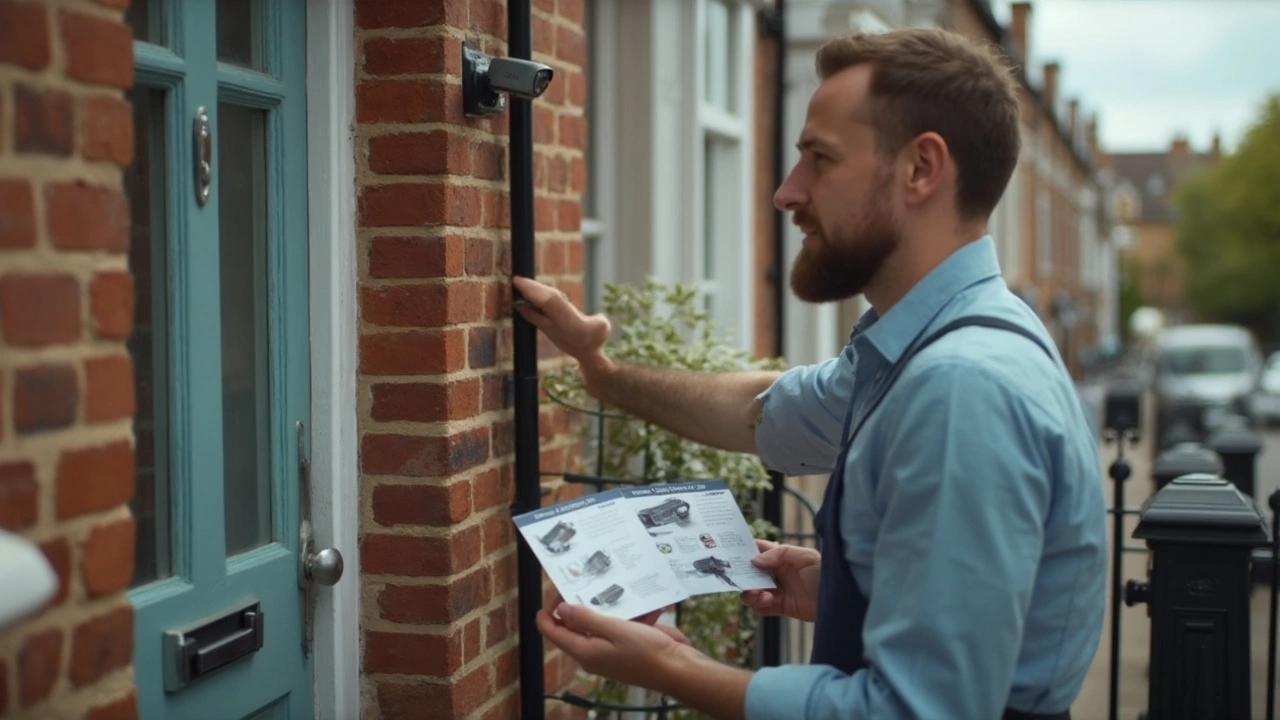
Breaking Down the Leading Brands
If you ask people which security camera brand is number one, you’ll hear names like Arlo, Ring, Blink, and Google Nest tossed around. But don’t just go by popularity—let’s look at what these brands are really offering.
Arlo gets a lot of love from folks who want totally wire-free setups with great resolution. Whether you stick one on a fence or in your living room, Arlo’s cams pull off sharp 2K or sometimes 4K video, and their smart app is smooth to use. One thing to watch out for: you’ll need a subscription (Arlo Secure) to keep video history, or you lose out on a lot of the features that make their stuff special.
Ring is probably the most recognized name thanks to its doorbell cams, but they’ve got a wide lineup now. Ring slots in well with Alexa setups—bright lights, strong motion alerts, and solid night vision. They have a famous Neighborhood app to track local alerts. But, again, most advanced stuff is stuck behind a subscription (Ring Protect), and some folks worry about Amazon’s handling of video data.
Blink is Amazon’s budget-friendly sibling to Ring. If you want no-frills, DIY cams that just work (and last ages on batteries), Blink is a good pick. Video isn’t quite as crisp as Arlo or Nest, but it’s fine for front porch action. Local storage is possible too, which is handy if you're not crazy about cloud plans.
Google Nest steps in with easy integration for Google-powered homes and really snappy face recognition. Their IQ cams (now just called Nest Cam) offer clean 1080p footage, strong AI alerts, and 24/7 recording—but you need a Nest Aware plan for the full package. Native Google Home app controls are a sweet bonus.
For fast comparison, here’s a quick look at how these top home security camera brands stack up:
| Brand | Resolution | Battery or Wired | Subscription Required? | Smart Home Support |
|---|---|---|---|---|
| Arlo | 2K/4K | Battery & Wired | Yes (for full features) | Alexa, Google Assistant, Apple HomeKit |
| Ring | 1080p–4K (Elite) | Both | Yes (for video history) | Alexa |
| Blink | 1080p | Battery | Optional | Alexa |
| Nest | 1080p | Battery & Wired | Yes (for most features) | Google Assistant |
If you want pro-level monitoring, look at security camera brands like Lorex or Swann, which build chunky DVR/NVR kits more for whole-house or business use. These offer no monthly fees but come with a learning curve and lots of cables to run.
No matter the brand, the big question is: do you want easy-to-use home security cameras, or heavier-duty systems that take work? The best brand for you depends on how much you want to fiddle with tech, your budget, and how deep you are into Alexa or Google. Try to match the brand’s strengths with what you actually need, and never get fooled by a slick ad.
Real-Life Performance & User Tips
So you’ve picked a security camera brand that looks good on paper. How does it stack up in real life? You start seeing the real difference once you set up the cameras, play with the mobile app, and catch your first alert at three in the morning.
Quick fact: In a recent survey among homeowners, about 64% said easy-to-use mobile apps mattered more than fancy video specs. Because if you can’t pull up a live feed fast, it’s basically useless. Some top brands like Arlo and Ring nail the app experience—they’re quick, they rarely crash, and they don’t flood your phone with pointless push notifications. Cheap off-brand cameras often trip up here, and updates are slow if they even come at all.
Home security is also about what you see on camera. If the camera gives you blurry faces at night, it won’t help you if something happens. Look for cameras with 1080p or better, and solid night vision. From testing and user reviews, Nest and Eufy cameras usually win for clear video, night or day. Wyze is cheaper but tends to lag behind at night even though it’s improved a lot with updates.
One thing that trips up a lot of homeowners is notifications. Too many, and you’ll start ignoring them. Too few, and you’ll miss something important. Pro tip: Brands like Ring and Eufy let you set "zones" so you only get alerts when someone steps onto your porch, not every time a car drives by. This keeps things sane.
You want cameras that play nice with your Wi-Fi. Wi-Fi hiccups can ruin everything. Place your router close to where most of your cameras are, and always run a speed test before buying tons of cameras. If your network’s weak, you’re better off with just one camera covering your entryway really well.
Here’s a quick compare of some of the best brands according to how they perform for everyday users:
| Brand | App Usability | Video Clarity | Alert Customization | Price Range |
|---|---|---|---|---|
| Arlo | Excellent | Sharp (4K on some models) | Flexible zones | Mid to high |
| Ring | Very Good | Good (1080p+) | Custom zones | Low to mid |
| Nest | Easy, integrates with Google | Clear, day/night | Smart alerts | High |
| Wyze | Basic, improving | Good in day, fair at night | Some custom | Very low |
| Eufy | Simple, clean | Sharp, strong night vision | Zones plus AI | Low to mid |
Some real user tips to squeeze the most from your setup:
- Keep your camera clean. Even a little dirt or spider web messes up motion detection.
- Place cameras high up to get the best view, but tilt down to avoid blind spots.
- Recharge or swap batteries on schedule, or go for a wired model if you never want to worry about it.
- Secure your app with two-factor authentication. Don’t let someone half a world away peek into your house.
- Test your system every month. Walk past your cameras and see if you get alerts. If not, tweak your settings.
Cut through the noise, focus on real user experience, and you’ll save cash—and a ton of headaches later.
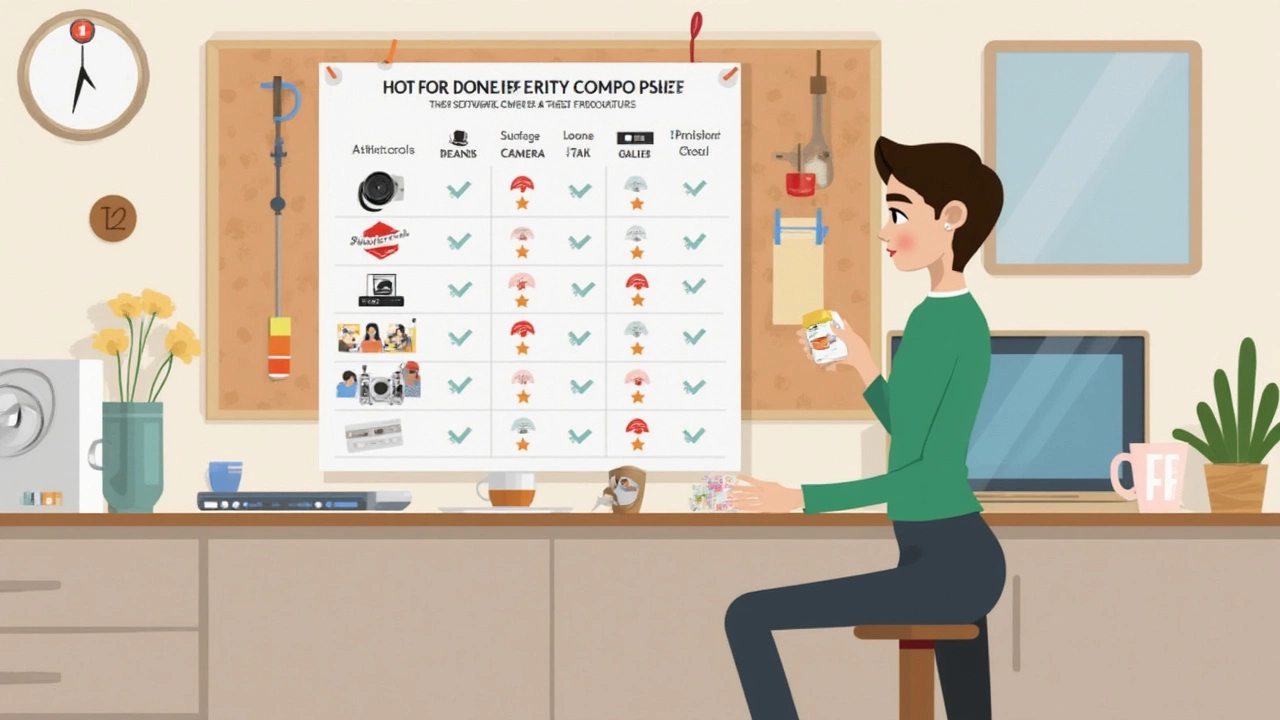
Picking the Right Camera for Your Needs
Let's be real—no single security camera brand fits every home. What matters is matching your needs to the right features. Start by thinking about where you want coverage. Is it your front porch, driveway, backyard, or even inside to watch pets or kids?
If you’re covering the outdoors, look for a camera that can handle rain, snow, or the crazy heat. Check the IP rating (for weatherproofing)—the higher, the better. For example, cameras like Arlo Pro series have IP65 or above ratings, which means they handle bad weather without quitting.
Storage is a big deal too. Some home security options want you to pay monthly for video storage, while others, like Eufy, give you local storage with no extra fees. If you want to avoid subscriptions, stick with brands offering SD card slots or onboard storage.
Image quality matters. Don’t get fooled by just the megapixel count. 1080p is enough for small apartments, but for wide yards or driveways, go for 2K or even 4K. The best security camera brand for sharp nighttime footage? Lorex and Nest are known for great night vision, but even budget cameras from Wyze give surprisingly clear videos in the dark.
Smart home integration can make life a lot easier. If you already use Alexa, Google Home, or Apple HomeKit, be sure the camera works with it. Brands like Ring (for Alexa users) or Logitech Circle View (better for Apple fans) play nice with major smart assistants.
| Feature | Good If You… | Brand Examples |
|---|---|---|
| Weatherproofing | Want outdoor cameras | Arlo, Ring, Eufy |
| No monthly fees | Hate subscriptions | Eufy, Wyze |
| High Video Quality | Need crisp footage | Lorex, Nest |
| Smart home support | Already have smart speakers | Ring, Logitech, Nest |
Installation is another thing most people forget about. Don’t like drilling holes? Wire-free cameras are way easier and less messy. But if you want to avoid changing batteries all the time, wired options or cameras with solar panels (like Arlo Pro 4) save headaches long-term.
And don’t just chase ratings—check real user reviews for stuff nobody tells you. Maybe the app is clunky or alerts are delayed. Those details matter more than what’s written on the box. In the end, the surveillance setup you pick should fit your life, not just your house.

